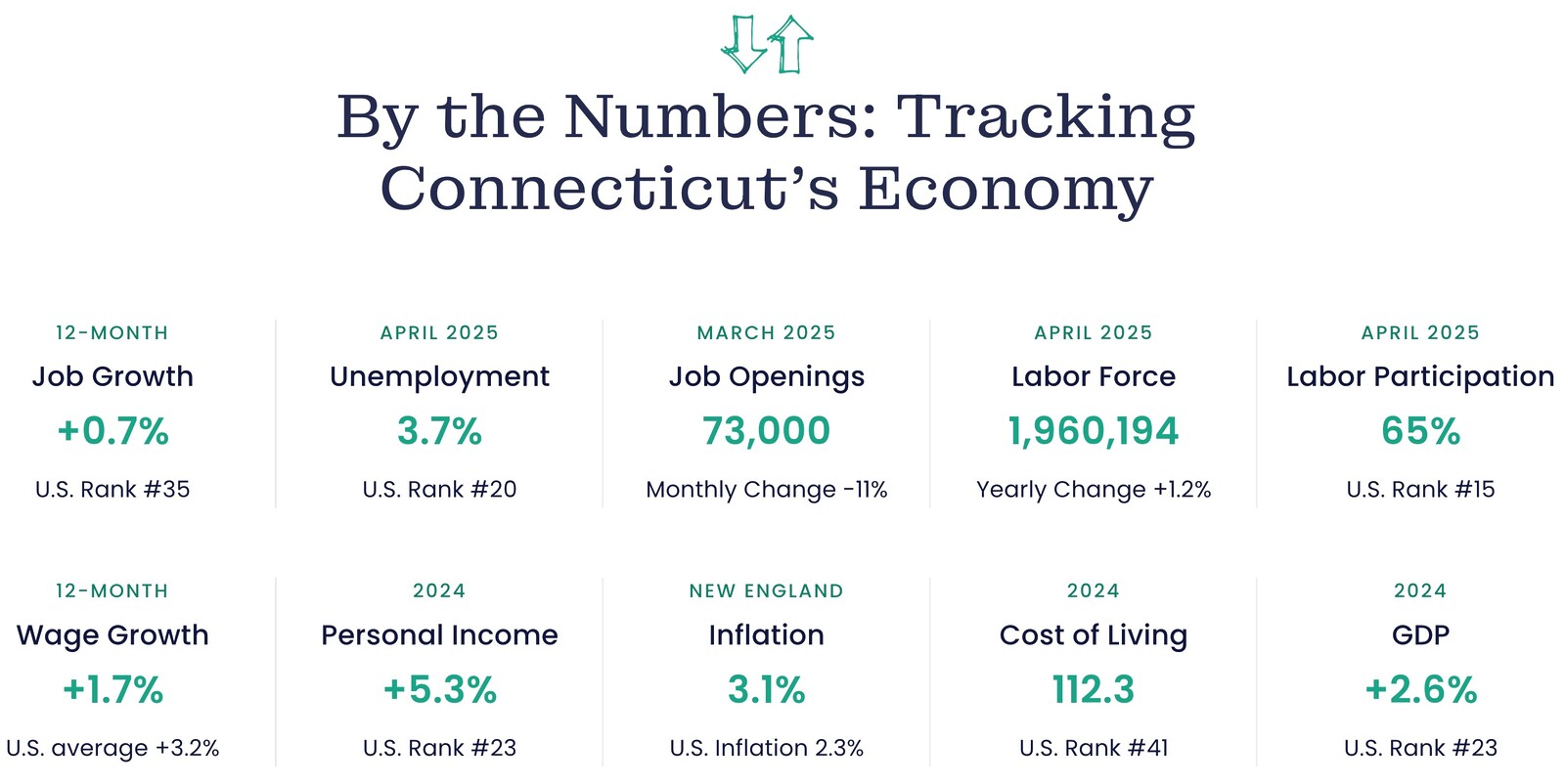Connecticut employers added 6,900 jobs in April, erasing first quarter losses as volatility continues to define the state’s employment picture.
The April gains brought year-to-date growth to a net 2,600 new jobs based on the Department of Labor’s latest monthly report.
Private sector employment increased by 6,800 last month and is now at an all-time high of 1,483,600.
The state’s labor force also increased by 3,800 in April and is now 1.5% above pre-pandemic levels, with job openings at 72,000, or 4% higher than February 2020.
Connecticut’s unemployment rate ticked up for a fourth consecutive month to 3.7%, 20th highest of all states. The U.S. rate is 4.2%.
The labor participation rate increased marginally to 65%, 15th best in the country.
Economic Softening
“It’s a relief to see the turnaround for job growth in April after such a disappointing start to the year,” said CBIA president and CEO Chris DiPentima.
“We’re now back in the positive for the year, while the labor force has also posted modest gains.
“However, we remain concerned about the underlying volatility in Connecticut’s job market, with data trends also indicating a real softening in economic conditions.
“We remain concerned about job market volatility, with data trends also indicating a real softening in economic conditions.”
CBIA’s Chris DiPentima
“Job openings declined for a second month in March, as they did across the country, and the unemployment rate has ticked up gradually over the past few months.”
DiPentima also voiced concerned with the state’s manufacturing sector, where employment has declined by 2,100 over the past 12 months despite more than 5,000 openings.
Manufacturing has recovered just 45% of all jobs lost to pandemic disruptions, with employment levels impacted by a range of factors, including an aging workforce and a lack of skilled candidates.
“While there are numerous active efforts targeting manufacturing workforce development, it’s clear more needs to be done to meet sector needs,” he said.
‘Challenging Times’
Connecticut’s 12-month job growth rate is 0.7%, 35th among all states and well below the national rate of 1.2%.
New Hampshire leads the New England states with year-over-year growth of 1.1%, followed by Vermont (0.9%), Rhode Island (0.8%), Connecticut, Maine (0.6%), and Massachusetts (0.2%).
With growing uncertainty clouding the economic outlook, DiPentima called for state policymakers to “focus on providing the stability, certainty, and predictability needed to navigate challenging times.”

“For instance, the budget proposed by the legislature’s tax and spending committees is a self-inflicted wound with significant negative consequences,” he said.
“That budget not only weakens the fiscal guardrails, it adds almost $1 billion in new taxes on Connecticut employers at the worst possible time.
“Those tax hikes are completely unnecessary, with the proposed budget threatening the economic growth that Connecticut has enjoyed since adopting the fiscal guardrails.
“We must avoid new costly mandates, regulations, and taxes and pursue common sense policies that will make Connecticut a more affordable place to live and work.”
Industry Sectors, Labor Markets
Seven of Connecticut’s 10 major industry sectors posted employment gains in April, led by professional and business services with 3,300 new positions (1.5%).
The education and health services sector grew by 1,800 positions (0.5%), followed by trade, transportation, and utilities (1,700; 0.6%), other services (400; 0.6%), leisure and hospitality (200; 0.1%), construction (100; 0.2%), and government (100; 0.04%).
Financial activities lost 400 jobs (-0.3%), followed by information services (-200; -0.7%) and manufacturing (-100; -0.1%).


Education and health services, professional services, construction, and trade, transportation, and utilities are the only sectors to recover pandemic job losses.
All five of the state’s major labor market areas saw gains in April, led by Bridgeport-Stamford-Danbury with 2,400 new jobs (0.6%).
Hartford-West Hartford-East Hartford added 2,200 positions (0.4%), followed by New Haven (2,000; 0.7%), Waterbury-Shelton (800; 0.5%), and Norwich-New London-Willimantic (200; 0.2%).









